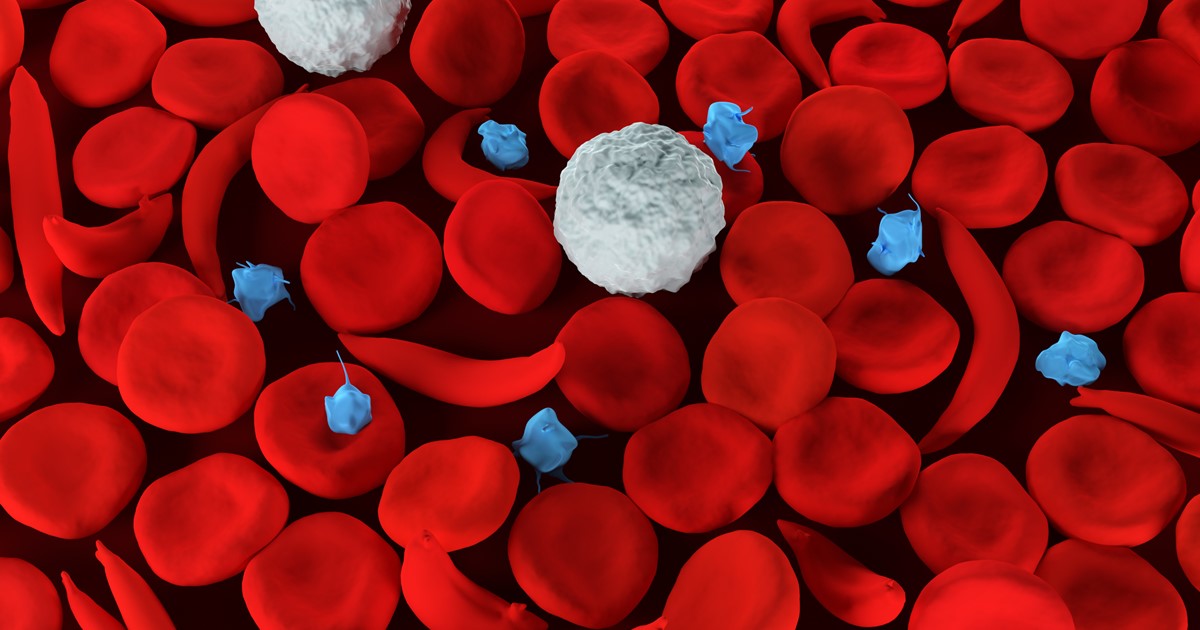A Comprehensive Guide To Sickle Cell Anemia
Sickle cell anemia, also known as sickle cell disease, is a common genetic disorder that affects the red blood cells and is an inherited form of hemolytic anemia, said to be more prevalent in African American individuals. It is a condition in which there are not enough healthy red blood cells to carry adequate oxygen throughout the body and to all of its vital organs. The sickled red blood cells are fragile and can rupture quite easily, hence when the amount of healthy red blood cells decrease from a rupture. This is known as hemolysis and results in anemia.
Learn how this genetic blood disease develops, the specific genetic trait that causes it, the symptoms individuals endure when afflicted with this incurable disease, along with other details such as treatment options and prognosis. Let's start with learning what the sickle trait is and how it is passed on through generations.
What Is The Sickle Trait & How Is It Passed On?

Sickle cell anemia is inherited as an autosomal, meaning the gene that causes this disease is not linked to sex chromosomes and is a recessive condition. The gene containing the DNA for this condition can be passed on from one parent who is a carrier to a child. For sickle cell anemia to manifest a sickle cell gene must be inherited from both the mother and father, so the child has two sickle cell genes. If a child only inherits one gene, this is called the sickle cell trait or the carrier state, as the sickle cell trait does not cause sickle cell anemia. Carriers often do not experience any of the symptoms those affected by the disease do. However, when two carriers of the sickle cell trait produce offspring, their children have a one in four chance of developing sickle cell anemia.
What is the sickle cell trait specifically? It begins with the red blood cells manufactured in the bone marrow and their complex biconcave shape expand, so they have adequate storage capacity for hemoglobin molecules that carry oxygen throughout the body. This makes the cells soft and flexible so they may squeeze through incredibly tiny blood vessels in the body. However, in sickle disease and with the trait, these red blood cells form an abnormal crescent shape and can no longer fit into these tiny spaces, which increases the chance of the patient developing blood clots in small capillaries of different organs and leads to organ damage.
Get the major details on the main types of sickle cell anemia now.
Main Types of Sickle Cell Anemia

There are a few main types of sickle cell anemia. The most common and severe type is hemoglobin SS disease. The second most common type is hemoglobin SC, which has similar symptoms to hemoglobin SS with less severe anemia. Hemoglobin SB+ thalassemia is a type of sickle cell anemia that occurs when beta-globin gene production is affected, and red blood cells are smaller because of the reduced amount of beta protein. The symptoms aren't as severe as with the first two types. Sickle beta-zero thalassemia has similar symptoms to SB+ thalassemia and has the same cause, but the symptoms are more severe. Hemoglobin SD, SE, and SO are rare forms of sickle cell anemia and don't tend to have severe symptoms.
Continue reading to learn about the symptoms a patient should be aware of if they believe they might have sickle cell anemia.
